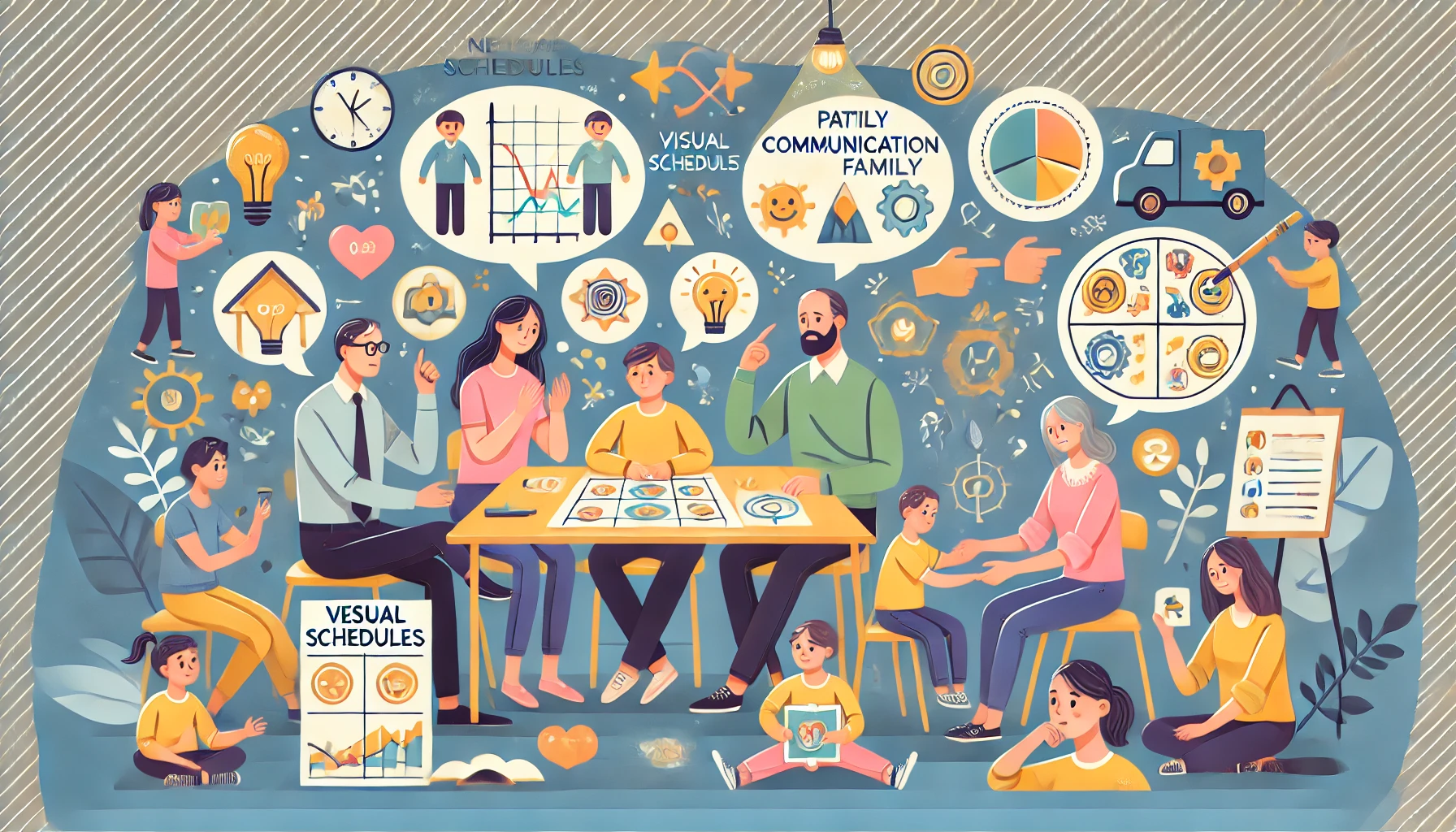Effective communication is the foundation of strong relationships, and it is especially important in neurodiverse families. Families that include neurodiverse individuals may face unique communication challenges due to differences in communication styles, sensory processing, and social understanding. This article will explore strategies for improving family communication, fostering understanding, and strengthening relationships.
Why Communication is Important in Neurodiverse Families
Communication is the key to connecting with others and maintaining healthy relationships. In neurodiverse families, communication can sometimes be challenging due to:
- Different Communication Styles: Neurodiverse individuals may communicate differently, such as using non-verbal cues or having difficulty expressing emotions verbally.
- Sensory Sensitivities: Sensory sensitivities can make verbal communication more challenging, especially in noisy or overwhelming environments.
- Social Understanding: Some neurodiverse individuals may struggle with understanding social cues, leading to miscommunication or feelings of frustration.
Improving family communication helps reduce misunderstandings, improve emotional connections, and create an atmosphere of support and empathy.
Step 1: Encourage Open and Honest Communication
Open and honest communication is essential in any family. Encourage all family members to express their thoughts, feelings, and needs in a respectful and constructive way.
- Active Listening: Practice active listening, where family members fully concentrate on what the other person is saying without interrupting or judging. This helps create a space where everyone feels heard.
- Non-Judgmental Communication: Foster a non-judgmental environment where family members can share their thoughts and feelings without fear of criticism. This encourages honest dialogue and helps reduce stress and anxiety.
Step 2: Use Visual Aids and Cues
For neurodiverse individuals who may struggle with verbal communication, visual aids can be a helpful tool. Visual schedules, charts, or social stories provide clear and tangible representations of communication, which can make it easier to understand expectations and navigate social interactions.
- Visual Schedules: Create visual schedules to help neurodiverse individuals understand the flow of the day. This reduces confusion and provides a sense of predictability.
- Social Stories: Use social stories to illustrate appropriate behaviors and communication in various social situations. Social stories help neurodiverse individuals understand social expectations and improve social interactions.
- Emotion Charts: Emotion charts or visual aids with facial expressions can help individuals identify and express their emotions. This is especially helpful for those who may have difficulty articulating how they feel.
Step 3: Practice Patience and Empathy
Patience and empathy are key components of effective communication. Understanding that neurodiverse individuals may need more time to process information or respond helps reduce frustration and creates a more supportive environment.
- Give Time to Respond: Allow neurodiverse family members ample time to process questions or conversations and respond at their own pace. Rushed or pressured communication can lead to stress and misunderstandings.
- Be Patient with Non-Verbal Communication: Some neurodiverse individuals may communicate through body language, gestures, or facial expressions instead of words. Be patient and observe these non-verbal cues to understand their needs and feelings.
- Acknowledge Efforts: Recognize and appreciate the efforts of neurodiverse individuals to communicate. Positive reinforcement encourages continued engagement and improves communication skills over time.
Step 4: Set Clear and Consistent Expectations
Consistency is crucial for clear communication. Set clear expectations for behavior and communication, and ensure that these expectations are consistently reinforced.
- Use Simple and Direct Language: When communicating with neurodiverse individuals, use clear, simple, and direct language. Avoid ambiguity and be specific about what is expected.
- Create a Routine: A predictable routine helps neurodiverse individuals feel more comfortable and confident in their communication. When family members understand what to expect, communication becomes easier and less stressful.
- Clarify Misunderstandings: If misunderstandings occur, take the time to clarify and explain things further. Ensure that everyone feels understood and valued in the conversation.
Step 5: Foster Positive Communication Through Family Activities
Family activities provide opportunities to practice and strengthen communication skills in a relaxed and enjoyable setting. Incorporate activities that promote positive interaction and help everyone in the family communicate effectively.
- Board Games and Group Activities: Engage in activities like board games, puzzles, or group exercises that encourage collaboration and communication. These activities help build social skills and promote turn-taking and patience.
- Creative Projects: Collaborative creative projects, such as art, music, or cooking, provide opportunities for family members to express themselves and work together. These activities foster bonding and encourage open communication.
- Family Meetings: Hold regular family meetings where everyone has a chance to express their thoughts, concerns, and ideas. Family meetings create a safe space for open communication and problem-solving.
Step 6: Seek Professional Support if Necessary
If communication challenges persist or are causing significant stress, consider seeking professional support. Speech therapists, occupational therapists, and family counselors can help families develop communication strategies tailored to their needs.
- Speech Therapy: Speech therapists can work with neurodiverse individuals to improve verbal and non-verbal communication skills, helping them express themselves more effectively.
- Family Counseling: Family counseling can help improve communication dynamics within the family, providing strategies for conflict resolution and enhancing emotional understanding.
Conclusion
Improving communication in neurodiverse families requires patience, empathy, and understanding. By fostering open communication, using visual aids, setting clear expectations, and practicing positive interactions, families can strengthen their relationships and create a supportive environment where everyone feels heard and understood. Strong communication skills not only improve daily interactions but also contribute to better emotional connections and overall family well-being.
